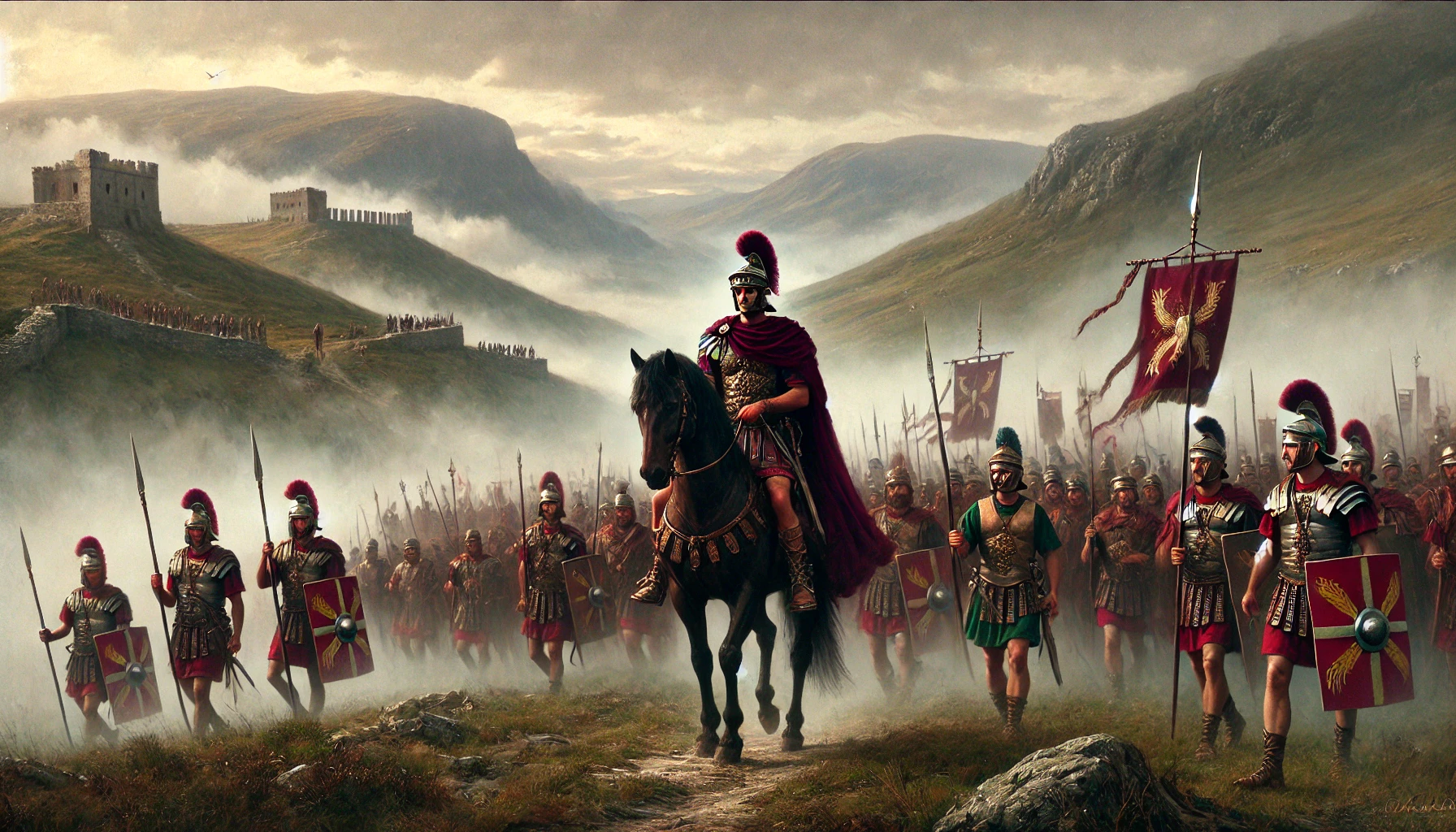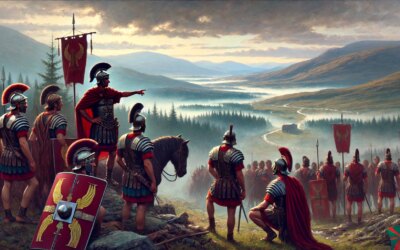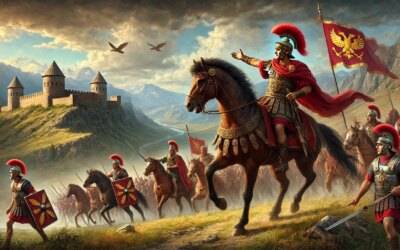Introduction: The Emperor’s Final Campaign
In the year 208 AD, Septimius Severus, Emperor of Rome, crossed into the mists of northern Britain with one goal—to bring the unruly tribes of Caledonia under Roman control. It was a bold move, marked by determination, imperial grandeur, and personal ambition. Though the campaign would prove costly and ultimately inconclusive, it represented the last major Roman effort to conquer what is now Scotland and stands as a testament to the resolve of one of Rome’s most formidable emperors.
The Severan Dynasty and Military Prestige
Septimius Severus, born in Leptis Magna in modern-day Libya, came to power in 193 AD after a bloody civil war. A skilled general and shrewd politician, he founded the Severan dynasty and spent much of his reign on campaign, expanding and securing Rome’s vast frontiers. By 208, Severus had grown increasingly concerned with the persistent instability of Britain’s northern borders, where the Caledonian tribes defied Roman authority beyond Hadrian’s Wall.
Rome’s Dilemma in Britain
Roman Britain had long been a troubled province. The far north remained outside the firm grasp of Roman administration. Hadrian’s Wall, built nearly a century earlier, served more as a defensive boundary than a true frontier. Beyond it lay the highlands, forests, and fierce tribal confederations resistant to Roman conquest. Severus, seeking a lasting solution, resolved to subdue the north once and for all.
The March into Caledonia
Severus arrived in Britain with his sons Caracalla and Geta and a substantial force, estimated at over 40,000 troops. He reestablished discipline, restored supply lines, and began a slow, methodical advance into Caledonia. Roman engineers built roads and bridges through the harsh terrain while soldiers fought skirmishes with elusive guerrilla forces. The weather, geography, and enemy tactics strained the legions, but the campaign continued with imperial determination.
Caracalla and the Harsh Measures
As the campaign dragged on, Caracalla took on greater responsibilities, reportedly adopting increasingly brutal tactics. Villages were destroyed, populations relocated or slaughtered, and the countryside devastated to break resistance. While effective in the short term, such measures sowed resentment and failed to create lasting Roman control.
Severus’ Decline and Death
Physically weakened and afflicted by illness—possibly gout or arthritis—Severus remained in Britain throughout the campaign. He wintered in York (Eboracum), where his health rapidly declined. In 211 AD, he died, reportedly uttering the words, “Let them hate me, so long as they fear me.” His death marked the end of serious Roman ambitions to conquer the Highlands.
Legacy of the British Campaign
Following Severus’ death, his sons abandoned the campaign and withdrew behind Hadrian’s Wall. The Roman hold over Caledonia was never firmly reestablished. Yet the campaign had a significant impact: it reaffirmed Roman presence in the north, disrupted tribal alliances, and introduced new military infrastructure. Severus’ presence in Britain left a lasting imperial footprint, even if his dream of full conquest faded with his passing.
Conclusion: The Emperor in the Mist
The campaign of 208–211 AD was Septimius Severus’ final and most ambitious military endeavor. It captured the essence of his reign—ambitious, unrelenting, and deeply imperial. Though the northern tribes of Britain would never be fully subdued, the effort itself stands as a testament to Roman tenacity. On the edge of the known world, Severus sought to impose Roman order on chaos, leaving behind a legacy etched in stone, steel, and the rugged hills of Caledonia.






